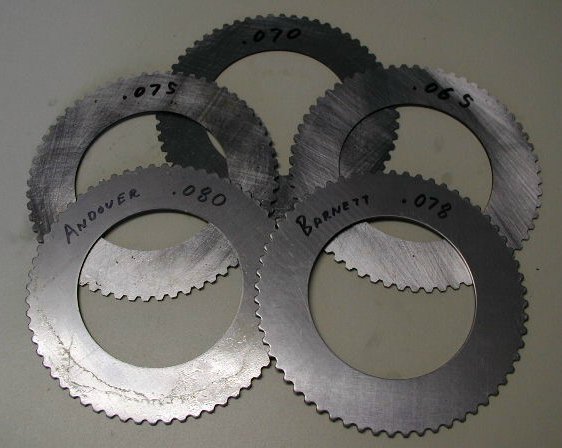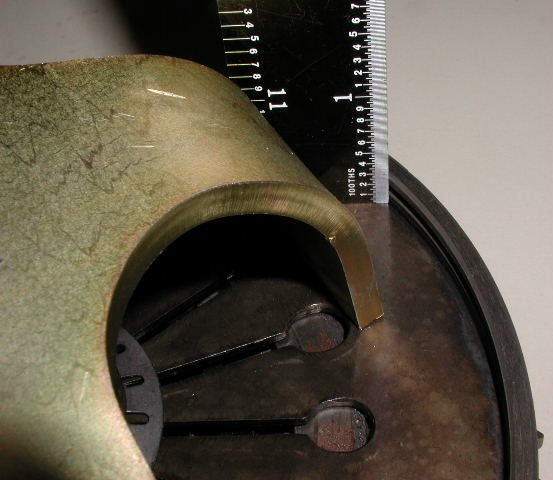
by Fred Eaton
Summary:
This article covers the differences between the 750cc clutch and the 850cc clutch, how to adjust the clutch pull by shimming the clutch thickness and some of my personal experiences.
The basic differences between the 750cc clutch and the 850cc clutch:
The 750cc clutch takes:
The 850cc clutch takes:
The diaphragm spring (part # 06-0770,
$57.75)
and the clutch basket (part # 06-2482,
$433.00)
are the same for both 750 and 850 clutches.
The thickness differences between the different clutch plates:
Since I have been using Barnett friction plates on both my race bike (running a dry clutch) and my MK3 road bike (running a wet clutch)
for many years with great success, I am using the thickness dimensions for the Barnett friction plates.
The pressure plates are Andover Norton factory plates. The thickness dimensions for the various plates and averaging the thickness
readings are:
750cc:
850cc:
Friction plate is: 0.145”
Plain plate is: approximately 0.080"
Pressure plate is: 0.225”
Total clutch plate thickness (4 friction, 3 plain and 1 pressure) is: 1.045”
Friction plate is: 0.121”
Plain plate is: approximately 0.080"
Pressure plate is: 0.102”
Total clutch plate thicknesses (5 friction, 4 plain and 1 pressure) is: 1.027”

The different thickness of the plain plates are:
- Andover Norton plain plates (part # 06-0746, $11.00 each) are approximately .080" thick.
- Barnett plain plates (part # 06-0746/B, $8.41 each) are approximately .078" thick.
Sorry, but we can no longer do shim plates due to the increased cost of precision grinding the plates. We may still have some shim plates in stock and when they are sold, they are gone. Check our clutch page Gearbox, Clutch for the plates we still have available. The shim plates that we do still have in stock are plates that we have precision ground on both sides to guarantee a true flat plate.
Adjusting the clutch pull:

Comments:
On my MK3, which I am the original owner, I started to have clutch slipping problems after around 12,000 miles.
I would clean the Sintered Bronze plates and the slipping would go away for around 500 miles and I would have to clean
the plates again.
I finally converted to Barnett plates and have never experienced any clutch slipping.
I have heard the stories warning about using Barnett clutch plates and do not think they have any merit.
I have run them hard on my 750cc race bike since 1995 and the only gearbox problem I had was losing a tooth on third gear
once and this was a used gear.
As I stated earlier, I run Barnett plates in my street bike and have actually raced this bike a couple of times with zero
problems.
It is easy to convert your four plate clutch to the improved five plate clutch by purchasing one additional plain plate,
five friction plates and the 850 pressure plate.
If you have access to a machine shop, you could have your 750 pressure plate turned down to the 850 size.
I do not have much personal experience with a four plate 750 clutch, but a fellow racer and a couple of customers that have
converted from
a four friction plate 750cc type clutch arrangement to the five plate arrangement have commented on the improved performance.
They think the clutch seems to pull easier, the adjustment lasts longer and experience zero clutch slip.
This page was written and designed by F. H. Eaton & Associates if you have any questions or comments please contact us at info@fheaton.com


